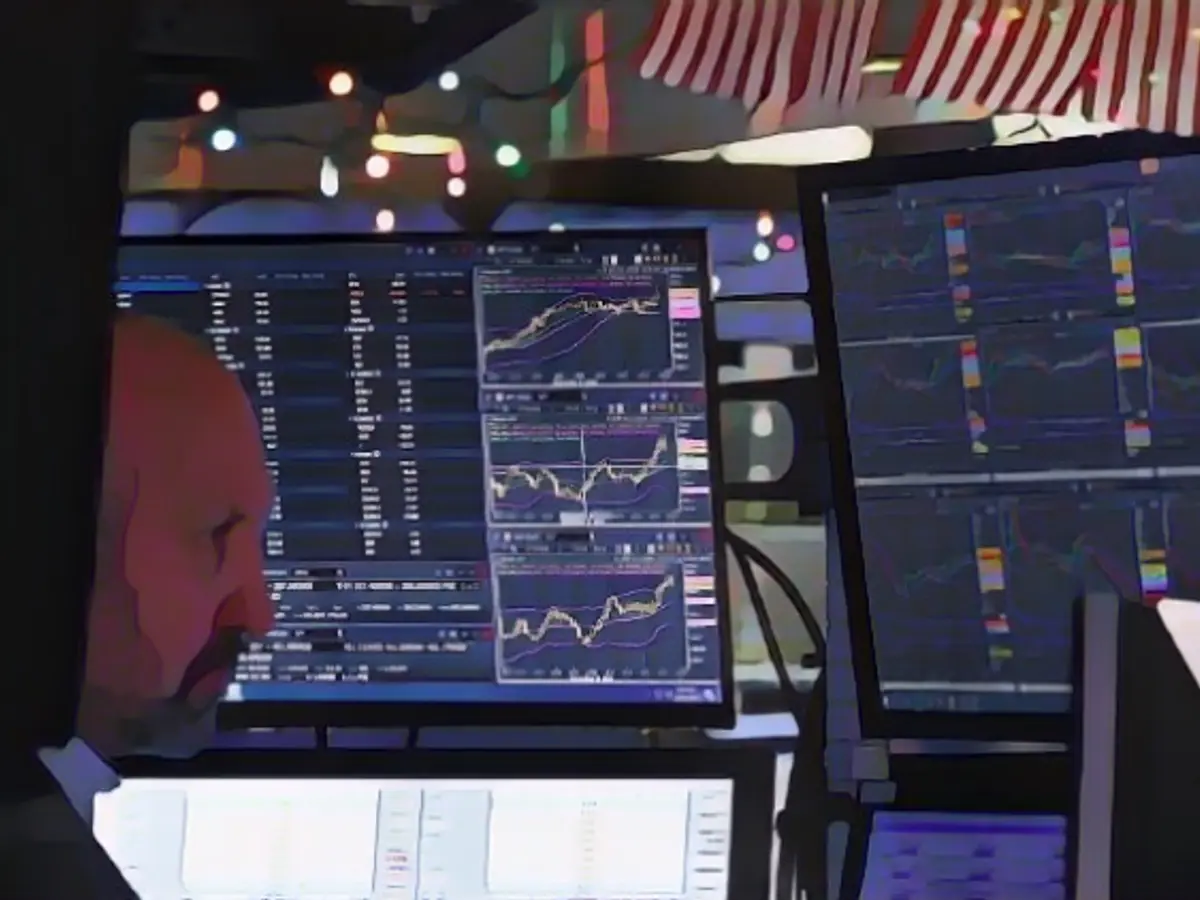Stock Market Soars on Fed Rate Cut Prospects
Good news for investors! The possibility of the Federal Reserve (Fed) slashing interest rates next year has sent Wall Street into a frenzy. And the enthusiasm is palpable, not just on the Dow Jones Industrial but across various indices.
The Dow Jones Industrial, the icon of Wall Street, touched a new peak, breaching the 37,000-point barrier for the first time. This day saw the Dow closing at 37,090.24 points, marking a 1.40% increase. Since its bounce back from the October low, the Dow has gained an impressive 14%. Since the beginning of the year, its growth has been a significant 12%.
The broader market, the S&P 500, also saw a surge, rising by 1.37%, landing at 4707.09 points. The technology-heavy Nasdaq 100 followed suit, climbing by 1.27%, reaching 16,562.37 points. Both the S&P 500 and Nasdaq 100 have been on a remarkable upward trajectory in this stock market rally, just shy of their all-time highs.
As anticipated, the Fed decided to maintain the key interest rate in its current range of 5.25% to 5.50%. However, its outlook for 2024 is remarkably different. The Fed is now anticipating a steeper decrease in interest rates, projecting an average rate of 4.6%. In September, this figure was projected to be 5.1%. This projection points towards approximately three interest rate reductions in 2024, totalling 0.75 percentage points.
James Knightley, ING’s chief economist, was quick to notice the shift in the Fed's outlook, calling it a "surprising change in outlook."
Wall Street is buzzing with optimism following the Fed's hint at potential interest rate cuts in 2024. Investors are hoping for a significant decrease in interest rates, perhaps even leading to decreases along the lines discussed by economists.
Fed's 2024 Interest Rate Cuts: A Closer Look
The Federal Reserve (Fed) reduced the federal funds rate by 100 basis points in 2024, from the 5.25% to 5.50% range to 4.25% to 4.50% by the end of the year[1][2]. This reduction was part of a series of rate cuts that began in September 2024.
2025 Rate Cuts: Less Optimistic Than Previous Projections
The Fed's median view in December 2024 suggested fewer rate cuts in 2025 compared to the September 2024 projections. Specifically, the median view forecasted only 50 basis points of rate cuts in 2025, which is half of what was expected in September 2024[1]. This suggests that interest rates will likely stay elevated for a more extended period.
Stock Market Impact
The impact of these rate cuts on the stock market is multifaceted:
- Bond Yields and Stock Performance: While the Fed's rate-cutting campaign has helped some, medium- and long-term interest rates in the US have risen sharply. This has dampened bond investors' returns, as higher bond yields equate to lower bond prices. However, analysts believe that this presents an opportunity for investors to consider adding moderate-duration exposure by moving out of cash into intermediate-term Treasury bonds[2].
- Risk Assets: The market is likely to discount an economic re-acceleration late in 2024 or early 2025, which could provide a boost to risk assets like equities. Specifically, there is anticipation of strong performance from cyclical and small-cap stocks, as well as gains from high yield and municipal bonds, and real estate investment trusts (REITs)[4].
- Market Volatility: The market environment is expected to be volatile, especially leading up to significant economic data releases and political events. The uncertainty around policy pivots, such as tariffs and immigration policies, adds to the complexity and potential for market fluctuations[4].
- Investor Sentiment: The pause in rate cuts has been seen as a positive sign for the economy, indicating that it is in a strong position despite elevated inflation. However, this also means that investors should be cautious about forecasts, given the high level of uncertainty due to policy changes[3].
In conclusion, while the Fed's rate cuts have offered some relief, the anticipated fewer cuts in 2025 and the ongoing economic and policy uncertainties suggest that the stock market will remain volatile. The market's reaction will depend on various factors, including economic data, policy changes, and investor sentiment.








